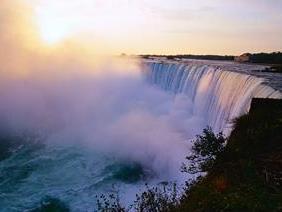| Home | About | Archives | RSS Feed |

Independent Investor: What To Expect After a Waterfall Decline
 It's been one heck of a two weeks. One would think the world was coming to an end, given the way global markets have behaved. You may not be able to make much sense of why markets sold off so quickly, but out of the carnage we may be able to predict what comes next. Here's why.
It's been one heck of a two weeks. One would think the world was coming to an end, given the way global markets have behaved. You may not be able to make much sense of why markets sold off so quickly, but out of the carnage we may be able to predict what comes next. Here's why.
Stock market free falls, such as the one we are presently experiencing, are called "waterfall declines," which are sudden drops of 20 percent or more compressed into a few short weeks or days. They are fairly rare events and most follow a roughly similar pattern consisting of three phases.
The first phase is the decline itself followed by a sharp bounce higher. We may be experiencing that bounce right now. Following the bounce (and possible re-test of the lows), the market should drift into a basing period that could last for one to three months.
During that time the market could move up and down in a sideways pattern similar to what we experienced in May through June of this year. Finally in the last phase there is a rally lasting six to 12 months that could move the markets higher by about 25 percent.
In reviewing 10 waterfall declines from 1929 thorough 2002, three months after the post-waterfall low, the stock market was higher in all 10 cases. Six months later, the market was higher in nine of the 10 cases with the average gain at 17 percent. A year later, the market was higher in nine out of 10 cases with the average gain equal to 24 percent. The financial crisis of 2008-2009 was in a league all by itself. The market, three months after the low of March 2009, was up 37 percent.
If we drill down even further, say to the next two weeks, one can expect a "relief rally" of as much as 10 percent. Then, if the pattern holds, we should "re-test" the bottom. In this case, if we have truly found a bottom for the S&P 500 Index at around 1,100, we should bounce again from there.
"So what happens if we break down through that 1,100 level?" asked a nervous client from Manhattan.
The short answer is 1,100 wasn't the bottom and we go lower, by as much as 10 percent, to S&P 1,000.
Waterfall declines are often recession-related. There have been exceptions to that rule, for example, in 1987 the market fell sharply for two days only to spring back. The Dot-Com boom and bust of 2002 was another waterfall decline that did not usher in a recession.
So what is the best way to navigate through a waterfall decline and its aftermath? It is obvious that one should ride out the turbulence; at least for the next few months. If we are truly entering into a recession, the economic data will confirm that fear or dispel it. If we are going into a double-dip, then I advise you to get defensive—bonds, dividend paying stocks, etc.
But it may turn out that the market was simply correcting, as it does periodically after a long and profitable run. Remember, the S&P 500 Index was up over 80 percent in over two years, so a 20 percent pullback doesn't look as serious from that perspective.
Bill Schmick is an independent investor with Berkshire Money Management. (See "About" for more information.) None of the information presented in any of these articles is intended to be and should not be construed as an endorsement of BMM or a solicitation to become a client of BMM. The reader should not assume that any strategies, or specific investments discussed are employed, bought, sold or held by BMM. Direct your inquiries to Bill at (toll free) or e-mail him at wschmick@fairpoint.net . Visit www.afewdollarsmore.com for more of Bill's insights.
| Tags: waterfall, bounce, stocks |

